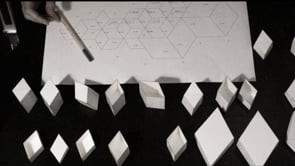
It's a SMALL world

An experimental interior design project by CITA.
CITA developed the design and production system of the travelling exhibition "It’s a SMALL world" as well as a presentation of the development process as part of the exhibition. "It’s a SMALL world" examines the development of generative design and production systems. CITA was asked in 2009 to develop the design of the “it’s a SMALL world” exhibition at the Danish Design Centre. We used the task to develop a parametric system that linked design and digital manufacturing. The project developed programmed models through which the 6 different scenarios of the exhibition could be designed as custom structures (mass-customization).
The task: designing for different scales
"It’s a SMALL world: is a cross disciplinary exhibition show casing the work from the fields of architecture, design and crafts. The exhibition was developed by a team of three curators from the Danish Design Centre, the Danish Architecture Centre and Danish Crafts. Initiated by the Danish ministry for Economy and Industry, the exhibition is developed for international showcasing. The exhibition was first shown at the Danish Design Centre (August 2009 – April 2010) and was afterwards touring through Asia and South America.
The exhibition presents 18 high profile designers, architects and craftsmen that have an innovative take on the future questions of sustainability, new materials and technology. With a focus on Non-standard Practice and New Craftsmanship the curatorial team was keen to develop a design that could incorporate these ideas while simultaneously develop a sustainable and environmentally conscious strategy for material use and transport.
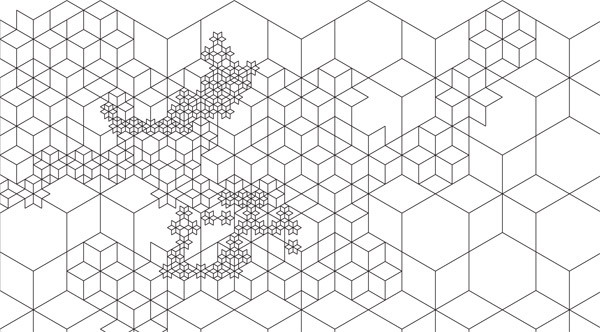

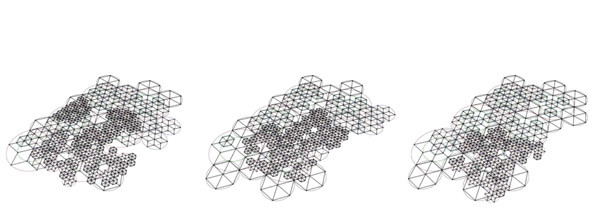
Generative design System
Our solution has been to develop a generative design system. The system is parametrically controlled and by defining the variables of the design setups, the structure “grows” in response to the particular needs of each exhibited object. Like a crystal, the exhibition design is defined by a particular underlying logic that frames the structure and sets the core architectural tendency and expression.
The generative system is developed on a hexagonal grid. Exploring packing principles we have developed a dynamic matrix. The matrix uses a fractal logic to pack diamonds of different scales. This allows us to change the scale of the exhibition design locally, while maintaining the possibility to further grow an islands or a wall and to expand and contract the designed structures.
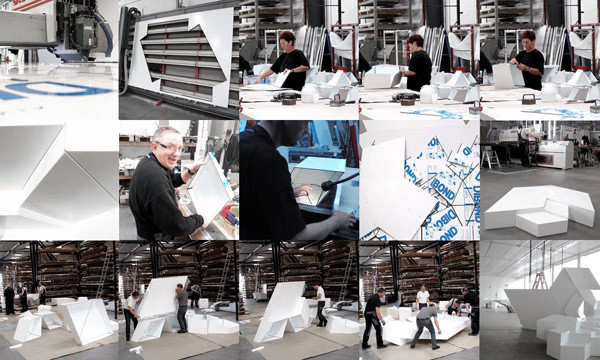
New use to traditional materials Digital Fabrication
The hexagonal grid is used to define a substructure of cassettes. Using the commonplace building material DiBond, a composite of aluminium and plastic, our aim is to explore how new digital crafting techniques can allow us to redefine the structural properties and uses of the material. The cassettes make use of AluCarbon’s quite singular property of folding. By scoring the material we can place crease lines and fold the each cassette accordingly. The folding makes use of the materials inherent strength allowing us to optimise the material use as well as respond to weight concerns for freight and transportation.

The design system grows each cassette as a singular object with a particular size, height, off cut and slide. We have developed our own interfaces with the manufacturer allowing us to generate the production drawings directly from the design environment. This linkage by file and factory allows us to mass customise the elements as a bespoke specification. All details and numbering are included into this process facilitating the assemblage of the structure.
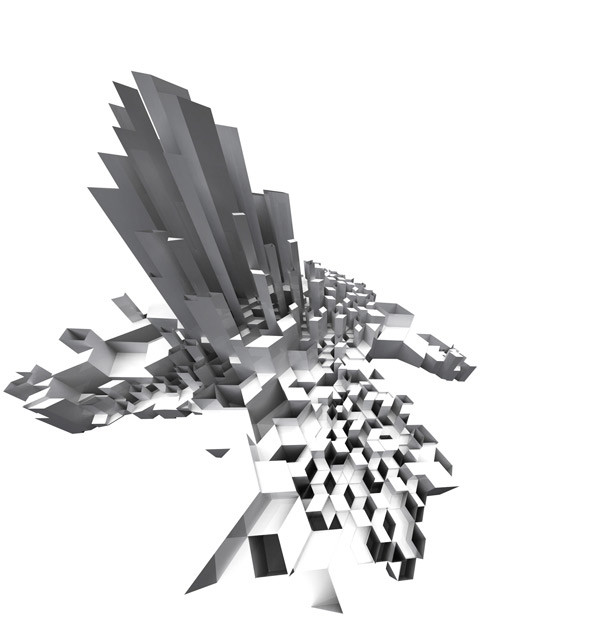
A common digital platform
The custom made generative tool established a common digital platform through which static analysis could be made and from which the final production drawings could be generated. This interdisciplinary platform creates a new relationship between architect, engineer and manufacturer. CITA used the task to investigate new design concepts, explore the complex programming of parametric models and gain firsthand experience with the direct link to production in an industrial environment.
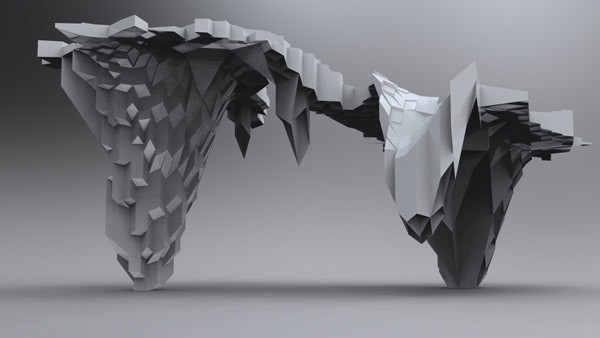
h
As a travelling exhibition "It's a small world" had been displayed at the following venues. Danish Design Center, Copenhagen, August 2009 – April 2010
Shanghai EXPO 2010 , Nordic Light House, April 2010 - September 2010
Brasilian Design Biennal 2010, Curitiba, September 2010 - October 2010
Santiago, Chile - November 2010 - December 2010
Industrial partner
Sign Partner, Esbjerg
Publications
Ramsgard Thomsen, M., Tamke, M.
"Implementing Digital Crafting: developing It’s a SMALL world"
Proceedings of Design Modelling Symposium Berlin 2009 p. 321-329. , Berlin, Germany, 5. Oktober 2009
Ramsgard Thomsen, Mette; Tamke,Martin; Riiber Nielsen, Jacob
Generating a scalar logic: producing the "it's a SMALL world" exhibition (2011)
IJAC, International Journal of Architectural Computing Volume 9, Number 2 / June 2011
Photography
Anders Ingvartsen













